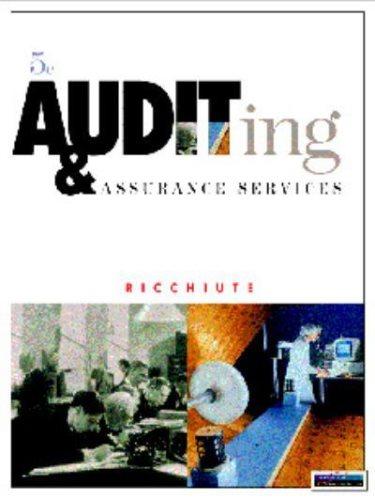Although once unusual, write-downs of impaired assets increased markedly in the first half of the 1980s. For
Question:
Although once unusual, write-downs of impaired assets increased markedly in the first half of the 1980s. For example, D. Fried, M. Schiff, and A. C. Sondhi, in "Impairments and Writeoffs of Long-Lived Assets," Management Accounting (August 1989), pp. 48-50, report that of 702 companies studied during the period 1980-1985, writeoffs increased in number from 38 to 207 and in pretax amount from \($28.3\) million to \($117.5\) million. Reports of asset write-downs are quite common in the financial press today. Required: Using the newspaper and magazines file in NEXIS, Mead Data Central's automated data retrieval system, or newspapers and magazines in a library, select an article about the effect on a publicly traded company of a discretionary write-down of impaired assets. Using the annual report file in the National Automated Accounting Research System (NAARS) or copies of annual reports in a library, select the annual report of the same company issued for the fiscal year referred to in the article. Draft a report that accomplishes the following:
1. Summarizes the article, indicating key issues—like management's or the financial community's reaction to the effect of the disclosure on reported income.
2. Lists and explains questions an auditor would likely pose to the management of the company you've selected.
3. Summarizes the company's disclosures about asset write-downs that appear in the footnotes (i.e., the footnote summarizing the write-down and the footnote summarizing accounting policies—Note 1—if separately explained) and the income statement (if disclosed as a separate line item).
Step by Step Answer:






